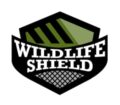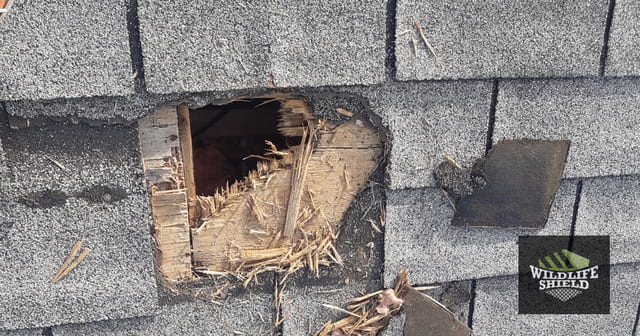The following case study tells the story of a raccoon removal job in North York. Raccoons had entered the attic by tearing through the roof. A comprehensive inspection and wildlife-proofing of the property evicted the raccoons from this home and has left it free of pests ever since.
Newtonbrook, North York
The Newtonbrook neighbourhood of North York in Toronto was settled in the early 19th century by Europeans. In the 1950’s the area was subdivided for a residential development and today only one of the original homes remains- on Drewry Avenue.
Former Prime Minister Lester B. Pearson was born in Newtonbrook.
The area is intersected by the Finch Hydro Corridor as well as many recreational parks.
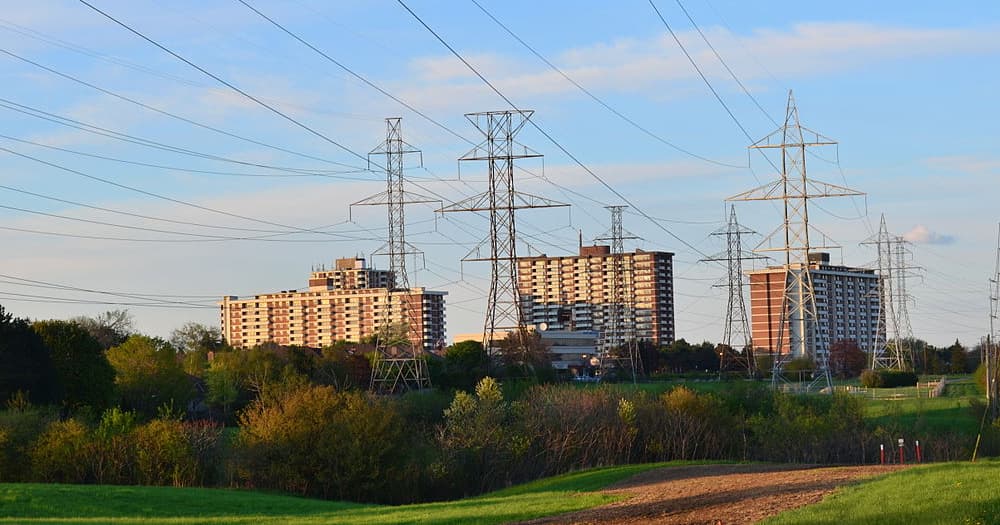
In this case, we will look at home in this North York neighbourhood that had a raccoon move into its attic through a hole on the roof.
Inspection
The homeowners contacted us after hearing noises coming from the ceiling. They were certain that the animal had been moving above them but were not sure if it was in the attic or simply walking around the roof.
We sent one of our certified wildlife technicians to investigate and determine if the roof had been compromised or not.
Upon arrival, our technician conducted a detailed inspection of the roof area and found a hole approximately 5×5 inches in size. Clearly, this had been the entry point for the animal to enter the attic. Due to the size of the hole, it was determined that it had been dug by a local raccoon. Raccoons penetrating directly through shingles and plywood is not common but may occur.
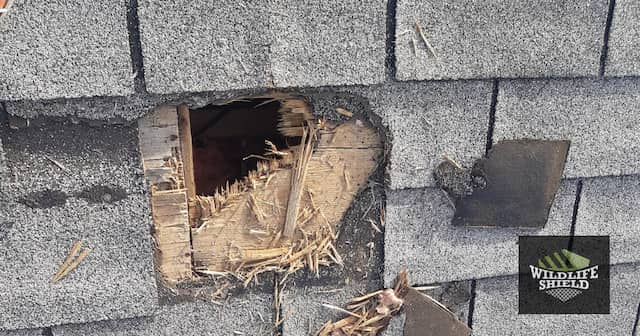
The homeowner was informed of the breach and agreed to have a full exclusion conducted on the roof. This includes securing the primary entry point and all other potential entry points that could be compromised in the future.
Exclusion
We decided to act swiftly and proceeded to perform the exclusion work on the same day.
Our technician first focussed on the visible point of entry, the large hole through the roof. It appeared the raccoon had found an area of damaged shingles and was able to expose the wood of the subroof. Once the wood is exposed, raccoons are able to gnaw through it and gain access to the enclosed space.
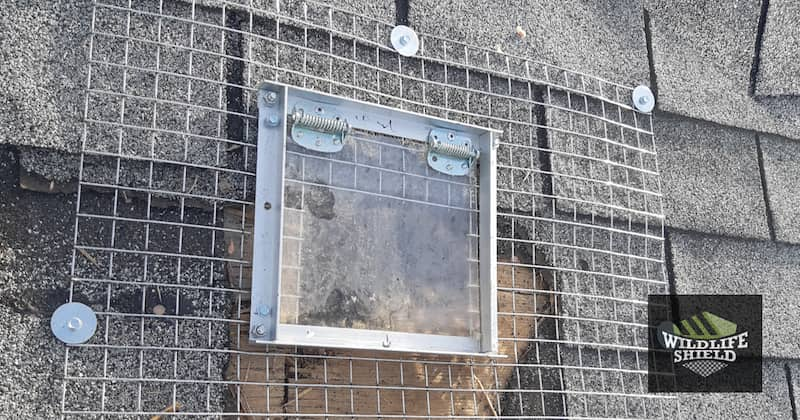
A one-way door was installed and secured with galvanized steel mesh. This door is large enough to allow any raccoons that may be inside the attic to vacate and not be able to enter. It is made of strong plexiglass material able to withstand any chewing. It is put in place for a long period to allow the animals enough time to leave the attic.
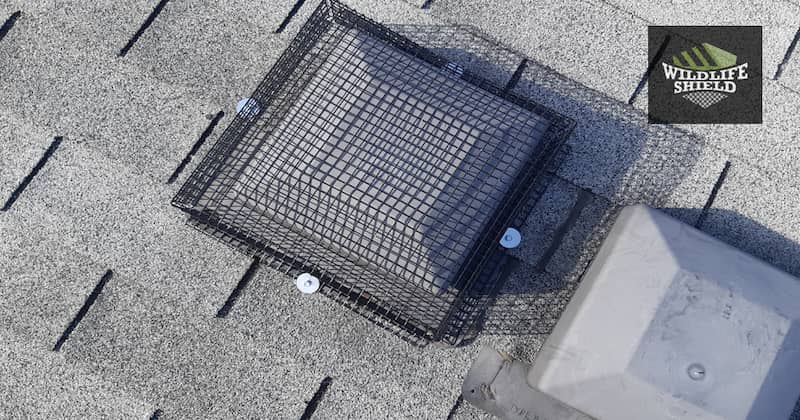
We then moved on to secure all other vulnerable structures on the roof. This included five roof vents and three plumbing vents. These vents are often made of plastic and are easily broken by wildlife to get into the space below. We installed PVC-coated galvanized steel covers to protect them. These covers are not only strong but also weather-resistant.
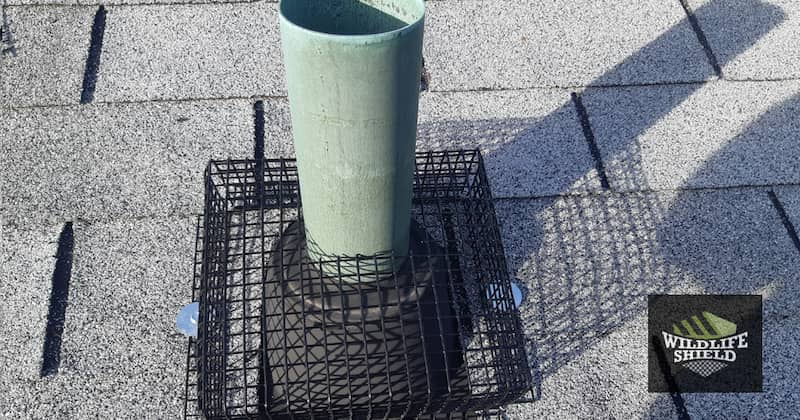
A soffit intersection was also protected. These vulnerable areas are commonly used as entry points due to their weak construction and the ability for wildlife to widen the gaps and gain access inside. Protecting them with steel mesh ensures the animals will not be able to expose the wood and make their way into the attic.
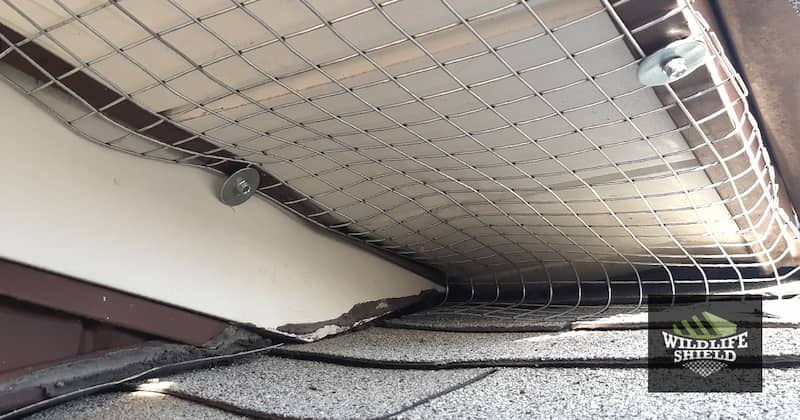
Our technician returned a few weeks later and removed the one-way door. The hole in the roof was then repaired using metal flashing to prevent any water from penetrating through the roof and allow time for the homeowner to arrange for a roofer to provide a permanent fix.
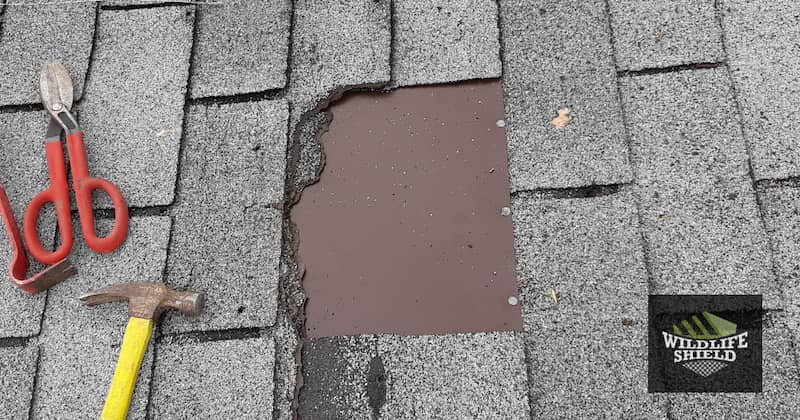
Conclusion
Maintaining a secure and fully sealed roof not only prevents any water from penetrating into your home but also discourages wildlife from attempting to breach it. Once shingles are damaged and come loose, raccoons can quickly chew through the wood and make the attic their shelter. Confined, warm spaces such as a home’s attic are the ideal spots for wildlife to nest and breed away from predators.
At this North York home, we discovered a hole large enough for raccoons to make their way into the attic. A full exclusion of the structure was the safest way to ensure animals no longer breach the attic.
Our work is also guaranteed for two years, and we will return to repair or replace any damaged installations.
